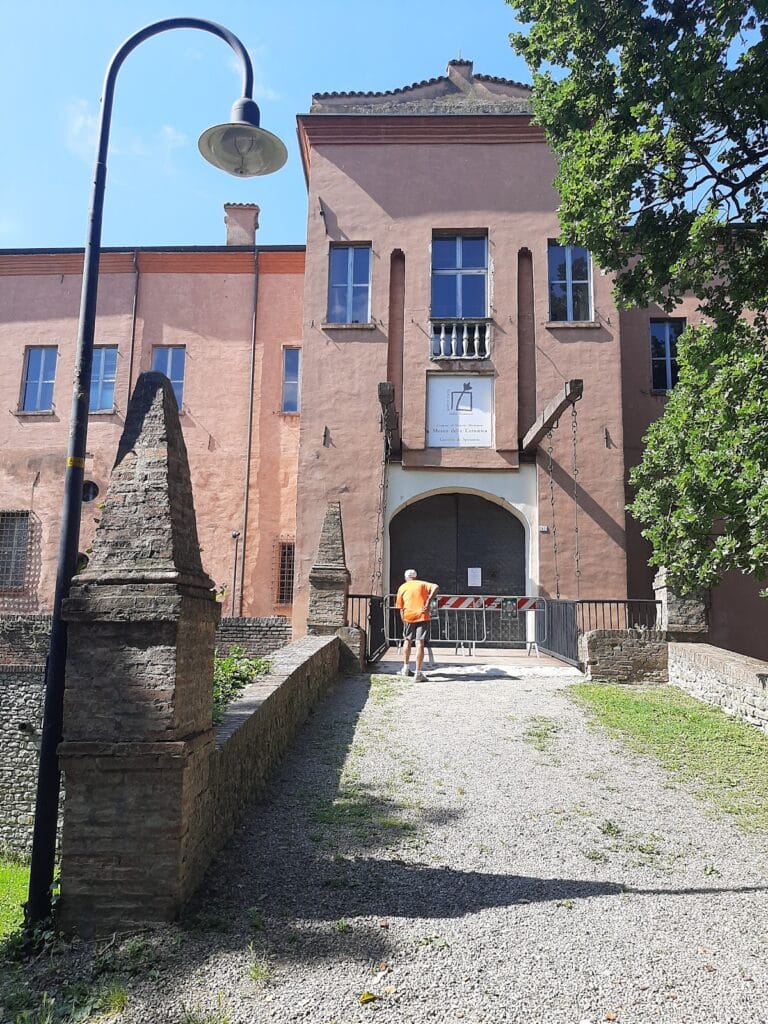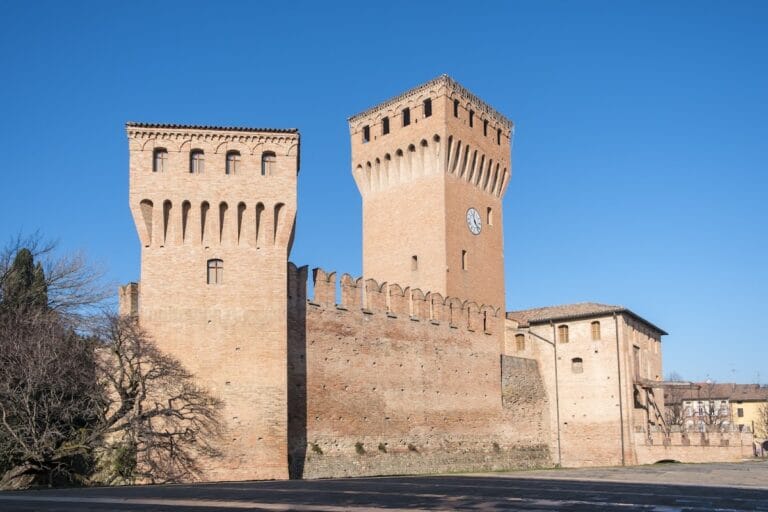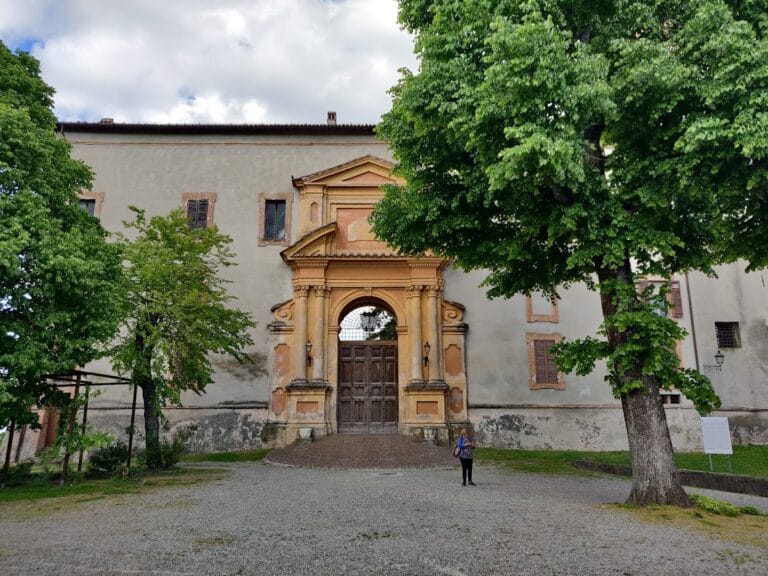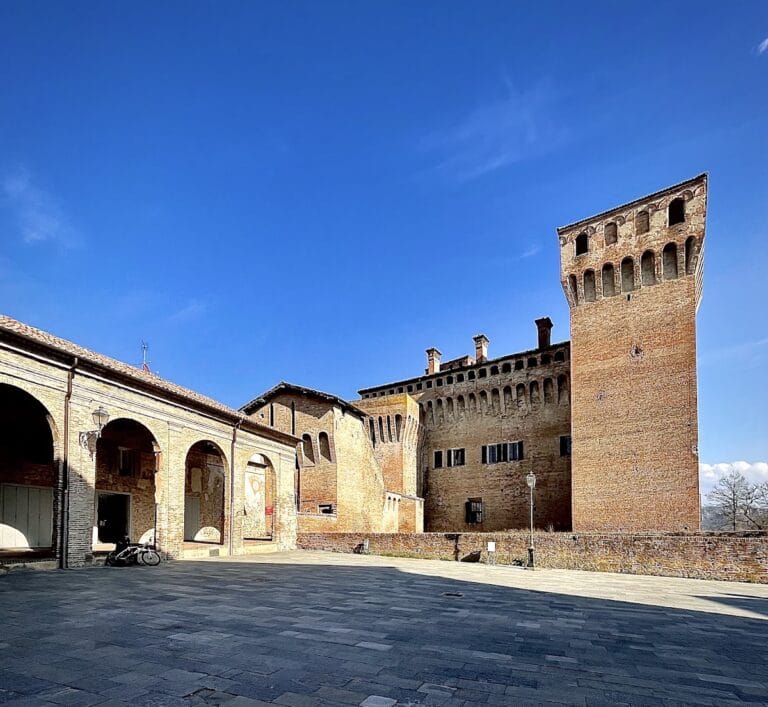Spezzano Castle: A Historic Fortress and Cultural Site in Fiorano Modenese, Italy
Visitor Information
Google Rating: 4.4
Popularity: Low
Google Maps: View on Google Maps
Official Website: www.fioranoturismo.it
Country: Italy
Civilization: Medieval European
Remains: Military
History
Spezzano Castle, also known as Rocca Coccapani, stands in the municipality of Fiorano Modenese in Italy. It was constructed by medieval builders, with origins tracing back to the 11th century, and first officially recorded in 1225 within the Modena statutes under the name “Castro Spezani.”
During the Middle Ages, the castle served primarily as a defensive stronghold. It protected the local population and acted as a lookout point to monitor approaching enemies. In 1355, it notably resisted a siege lasting fifteen days by the Estense forces, managing to avoid capture. The castle’s role as a military fortress continued into the late 14th century when, in 1393, Alberto V d’Este, Marquis of Ferrara, granted it as a fief to Marco I Pio, Lord of Carpi. This feudal ownership was confirmed again by Niccolò III d’Este in 1405.
By the early 16th century, the castle’s function began to change under Alessandro Pio di Savoia, who inherited the estate. He transformed it from a purely military installation into a seat of local government known as a podesteria, one of five under his family’s control. Construction to develop a palace within the castle walls commenced in 1529, reflecting this shift toward administrative and residential use. Towards the end of that century, Marco III Pio di Savoia demolished the castle’s original chapel dedicated to Saint Agatha, using its materials to expand the palace complex.
When Marco III Pio di Savoia died in 1599, ownership passed to Duke Cesare d’Este of Modena and Reggio. His family retained possession for approximately thirty years. In 1629, the castle was acquired by Marquis Guido Coccapani and became the official residence of the marquis’s appointed governor or podestà. This official oversaw civil and judicial matters in the surrounding territory. In 1699, Filippo Antonio Coccapani added a chapel dedicated to the Virgin Mary inside the castle, featuring an altar crafted by Giammarco Mazzelli.
The Coccapani family maintained control of the castle through the late 18th century. In 1797, the castle was formally recognized with the titles Rocca or Palazzo Nazionale, emphasizing its importance as a regional seat. However, in 1809, Spezzano lost its administrative autonomy when it was absorbed into the municipality of Sassuolo. This change ended the castle’s public governance functions, and it transitioned into a private residence rented by the Coccapani family. After reclaiming ownership by royal decree in 1811, the family undertook significant restoration and expansion efforts between 1862 and 1890.
In the early 20th century, ownership passed to the Counts Pignatti Morano. Eventually, in 1982, the local municipality of Fiorano Modenese purchased the castle, bringing it into public hands. Since then, the castle has served cultural purposes, such as housing the Museo della Ceramica, which opened in 1998 and showcases the history of ceramic production and the region’s past.
Remains
Spezzano Castle presents a large fortified complex originally enclosed by walls and featuring multiple towers, residences, and service buildings. Its layout reflects its initial military purpose with later modifications for residential and administrative use. The castle was first established with a central keep or mastio, surrounded by ancillary towers, housing, and functional spaces like granaries, barns, and warehouses. A chapel dedicated to Saint Agatha once stood within the walls but was removed in the late 16th century.
A significant defensive addition occurred in the 14th century when a moat was dug around the structure and the castle’s entrance was fortified with a tower crowned by a drawbridge. This drawbridge was reconstructed in 1795 after suffering considerable decay over time. Just beyond the drawbridge on the left side lies the Camera della Ragione, or Council Chamber. In the early 1600s, this room contained practical furnishings such as walnut desks and chairs, along with a locked chest that stored crucial documents like tax records and council minutes, highlighting its role in local administration.
The noble residential area on the castle’s first floor features the “Galleria delle battaglie,” or Battle Gallery, a large hall originally covered with expansive Renaissance frescoes extending 184 square meters, of which about 122 remain visible today. These frescoes depict various battle scenes, likely illustrating military campaigns led by Marco III Pio in Hungary and possibly Flanders during the late 16th century. Stylistically, they are attributed to Giovanni Guerra, influenced by the painter Nicolò dell’Abate and Flemish artistic traditions. Concealed under plaster for some unknown period, these frescoes were rediscovered during restoration work in the 1980s.
Another notable room is the “Sala delle vedute,” or Hall of Views, located on the ground floor and recognized as the castle’s largest chamber. It contains 57 frescoed images painted around 1595–1596 by Cesare Baglione. These works depict detailed topographical views of local territories as they appeared in the late 1500s, symbolizing the Pio family’s domains across five administrative areas: Sassuolo, Spezzano, Formigine, Brandola, and Soliera. The frescoes have undergone restoration multiple times, most recently in 1990, preserving their rich visual narrative.
The castle’s southeastern corner is marked by a distinctive pentagonal tower that housed four prison cells stacked vertically. These cells were austere, mostly without windows or sanitation, and prisoner graffiti discovered during late 20th-century restoration remains visible, providing rare traces of the building’s penal function. Since 2008, the highest of these former cells has been transformed into a communal acetaia, a facility for producing traditional balsamic vinegar. It contains three sets of communal barrels and has hosted annual vinegar tasting courses since 2005.
Within the castle is also the Museo della Ceramica, showcasing the technological development of ceramic production over time. It includes original artifacts, reconstructions, and workshops that cover prehistoric to contemporary periods. A notable expansion opened in 2014 offers an interactive multimedia experience in a large 300 square meter area titled “Work.” This museum occupies part of the castle’s extensive interiors, blending the site’s historical legacy with local cultural heritage.










